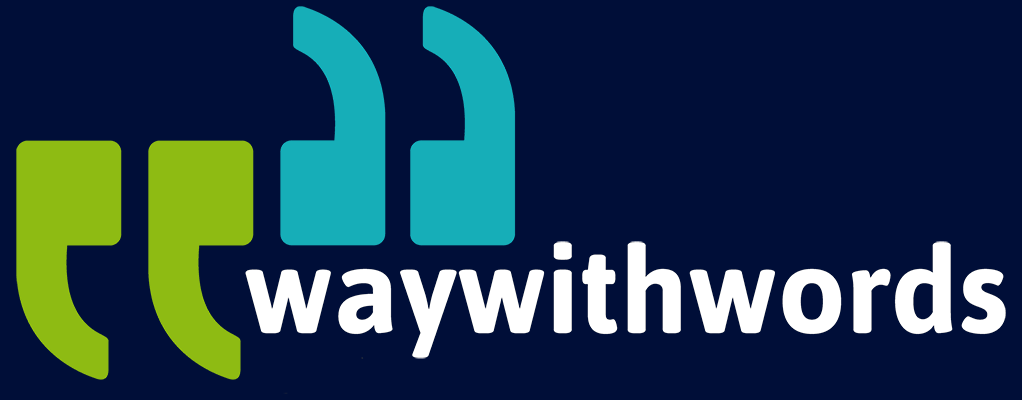How Do You Anonymise Voice Samples?
Understanding the Balance of Preserving Privacy & Maintaining Data Utility
The human voice is both a powerful communication tool and a deeply personal identifier. Every recording captures not only words but also unique characteristics that can point directly to a person’s identity. In today’s world of artificial intelligence, healthcare research, customer interaction analysis, and digital assistants, large amounts of audio are being collected and processed daily using face-to-face, online or mobile methods. This has made the question of how to anonymise voice data a critical one.
For organisations working with speech datasets, anonymisation is not simply a legal box to tick—it is a safeguard for trust, compliance, and ethical responsibility. Achieving this requires understanding the risks within voice data, the techniques available for anonymisation, and the trade-offs involved in balancing speaker privacy audio protections with the usefulness of the dataset.
In this article, we will explore the following key themes:
- What is voice anonymisation and why it matters
- Types of identifiable speech features
- Technical methods for voice dataset de-identification
- Regulatory requirements and standards shaping the practice
- The trade-offs between preserving privacy and maintaining data utility
What Is Voice Anonymisation?
Voice anonymisation is the process of altering or masking speech recordings to prevent the identification of individual speakers. Unlike text anonymisation—where redacting names or removing identifiers is relatively straightforward—voice requires a more complex approach. This is because the sound of a person’s voice itself is a biometric marker.
The goal of anonymisation is twofold:
- Prevent re-identification. The audio must no longer be traceable back to a specific speaker, even if someone has access to other datasets or biometric analysis tools.
- Maintain utility. The anonymised recording should remain useful for its intended purpose, whether that is training a speech recognition model, conducting linguistic research, or analysing customer service interactions.
There are two main categories of voice anonymisation techniques. The first focuses on signal-level transformation, which modifies the acoustic qualities of the voice such as pitch, timbre, or rhythm. The second focuses on content-level anonymisation, which targets identifiable words, names, or contextual references within the spoken material.
Why does this matter? With the increasing reliance on voice-driven technologies, the scale of collected audio is growing exponentially. This expansion raises serious privacy concerns. Regulations like the General Data Protection Regulation (GDPR) explicitly recognise voice as personal data. Without effective anonymisation, organisations may face compliance breaches, reputational damage, and ethical challenges in protecting participant rights.
Ultimately, anonymisation is about striking a balance. Remove too much, and the data loses value. Remove too little, and privacy is compromised. To find that balance, it is important to first understand the different kinds of identifiable features present in speech.
Types of Identifiable Speech Features
Every voice sample carries multiple layers of potentially identifiable information. These features go beyond just the words spoken. They extend to the unique qualities of the speaker’s voice, the contextual clues captured in the recording, and even hidden metadata. To properly anonymise voice data, each of these categories must be considered.
- Speaker Identity
Each individual’s voice is shaped by physiological factors such as vocal tract structure, pitch range, and resonance. These characteristics form a vocal signature that is as unique as a fingerprint. Even without explicit identifiers, machine learning systems or trained listeners can often recognise individuals based on these features.
- Spoken Content
The actual words spoken can directly reveal identity. Names, phone numbers, workplace identifiers, or geographic locations can all compromise anonymity. Indirect references can also narrow down identity—for example, mentioning a specific neighbourhood or a rare profession.
- Contextual Audio Clues
Background noises captured in recordings can provide strong contextual identifiers. A child’s voice, a recognisable workplace environment, or even birdsong specific to a region may inadvertently disclose sensitive information. These subtle details often carry more risk than anticipated, particularly when combined with other data.
- Vocal Biometrics
With voice increasingly used as a form of biometric authentication, recordings can be analysed by recognition systems to verify identity. Even heavily altered audio might still carry traces that biometric algorithms can exploit to match with stored voiceprints.
Together, these categories demonstrate why anonymisation is not as simple as muting a name or shifting a pitch. The risk lies in the accumulation of identifiable features. A robust anonymisation strategy must therefore take a multi-layered approach, combining acoustic transformations, content redaction, and metadata handling to fully protect speaker privacy.
Technical Methods for Anonymisation
Several techniques are employed to achieve voice dataset de-identification, each designed to address different risks. Most effective approaches combine multiple methods, balancing privacy protection with usability.
- Voice Transformation
This involves modifying the acoustic features of the recording. Techniques include pitch shifting, spectral warping, and time-scaling. For example, a speaker’s naturally high voice can be lowered to a neutral range, masking their identity while keeping the speech intelligible. However, heavy transformations may distort naturalness, reducing the dataset’s usefulness for tasks like emotion recognition.
- Speech Synthesis Masking
Here, audio is transcribed into text and then converted back into synthetic speech using a text-to-speech (TTS) engine. This completely removes the original vocal identity while preserving the spoken content. While effective for privacy, this method often loses emotional nuance, rhythm, or accent, which may limit its use in linguistic or affective computing research.
- Pitch and Prosody Modulation
Instead of fully altering or resynthesising the voice, pitch and prosody modulation introduces subtle changes to rhythm and intonation. This approach can disguise identity while preserving more of the original naturalness. It is often used in scenarios like court testimony recordings, where the authenticity of delivery must be preserved while protecting the speaker.
- Metadata Scrubbing
Audio files often contain metadata such as device IDs, GPS tags, and timestamps. If overlooked, these can undermine anonymisation efforts by linking recordings to specific contexts. Effective anonymisation therefore requires careful scrubbing of all embedded metadata in file headers and associated logs.
- Content Filtering and Redaction
Using automated speech recognition, systems can detect sensitive terms like names, phone numbers, or company identifiers. These can then be removed, replaced with placeholders, or masked with beeps. Human reviewers are often required to catch subtle identifiers that automation might miss.
In practice, organisations often layer these methods. For example, a dataset might first undergo voice transformation, then content redaction, and finally metadata scrubbing. This layered approach reduces the risk of re-identification while preserving as much data utility as possible.

Regulatory Requirements and Standards
The legal framework around speaker privacy audio has become increasingly strict. Organisations cannot treat anonymisation as optional; it is often mandated by law. Several key regulations and standards shape current practice.
- GDPR (General Data Protection Regulation)
Under GDPR, voice is explicitly recognised as personal data. Processing voice recordings without consent is a violation unless effective anonymisation removes all identifying features. Importantly, GDPR distinguishes between pseudonymisation (where identity is hidden but still potentially recoverable) and true anonymisation (where re-identification is no longer possible). Only the latter falls outside the scope of GDPR’s strict data protection requirements.
- HIPAA (Health Insurance Portability and Accountability Act)
In the United States, HIPAA sets clear standards for de-identifying patient information, including audio. Healthcare recordings must be stripped of identifiers such as names, phone numbers, and other personal details before being used for research, training, or secondary analysis.
- Research Ethics and Institutional Review Boards (IRBs)
For academic and medical research, ethics boards play a vital role in approving data collection methods. They often require detailed anonymisation protocols to ensure participant rights are respected. Consent forms must clearly state how audio will be anonymised and what risks remain.
- ISO/IEC and Other Standards
International standards bodies such as ISO and IEC have begun issuing guidelines around biometric and audio data protection. These frameworks help organisations align with best practices for anonymisation, particularly in cross-border collaborations.
Compliance with these regulations is not just about avoiding fines. It also builds trust with participants, clients, and stakeholders. Organisations that demonstrate strong anonymisation practices position themselves as responsible data stewards, strengthening both reputation and long-term sustainability.
Trade-Offs Between Utility and Privacy
The central challenge of voice dataset de-identification is balancing the need for privacy with the need for utility. Too much anonymisation, and the data becomes unusable. Too little, and privacy risks remain.
For example:
- High Privacy, Low Utility: Applying heavy distortion or synthetic replacement ensures identity protection but may remove important acoustic cues. This is problematic when training AI models that rely on natural emotion, accent, or rhythm.
- High Utility, Low Privacy: Retaining most natural features preserves data richness but risks exposing identity. This is especially dangerous if datasets are shared publicly or across organisations.
- Balanced Approach: Using layered anonymisation—such as moderate pitch shifting combined with redaction of sensitive terms—can offer a middle ground.
To manage these trade-offs, organisations can:
- Conduct a risk assessment before anonymisation, identifying which features are most sensitive and tailoring methods accordingly.
- Apply tiered anonymisation, with stricter measures for high-risk datasets (e.g., healthcare) and lighter measures for lower-risk contexts (e.g., general research).
- Combine automation with human review, ensuring efficiency without missing subtle identifiers.
The right balance will depend on the dataset’s purpose. Commercial voice assistants may prioritise preserving naturalness, while clinical studies may prioritise absolute privacy. The key is to make these decisions consciously, informed by both technical and ethical considerations.
Final Thoughts on How to Anonymise Voice Data
Anonymising voice samples is one of the most pressing challenges facing organisations working with speech data. Unlike text, voice carries biometric and contextual features that make re-identification a real risk. Effective anonymisation requires a blend of acoustic transformation, content filtering, metadata scrubbing, and regulatory awareness.
By understanding what makes voice identifiable, applying layered anonymisation methods, complying with legal frameworks, and carefully balancing utility with privacy, organisations can protect speaker identity while still unlocking the value of voice data. As AI and speech technologies continue to grow, robust anonymisation will be central to both ethical responsibility and sustainable innovation.
Resources and Links
Anonymization: Wikipedia – This resource provides an overview of anonymisation techniques across different data types, including speech and audio. It explains key principles, challenges, and methodologies for reducing re-identification risks in datasets.
Way With Words: Speech Collection – Way With Words offers advanced speech collection and processing solutions tailored for research, AI training, and business needs. Their service combines real-time processing with high accuracy, ensuring data is prepared responsibly and efficiently for critical applications. With expertise in handling sensitive datasets, they provide reliable support for organisations aiming to balance utility with strong privacy safeguards.
